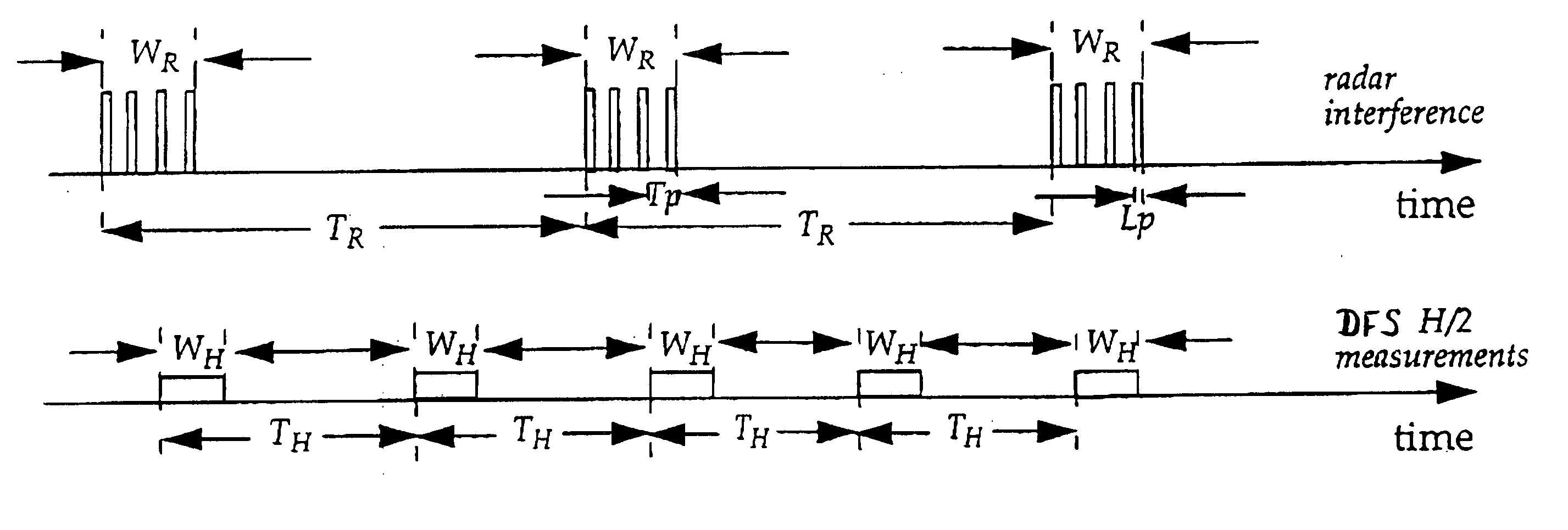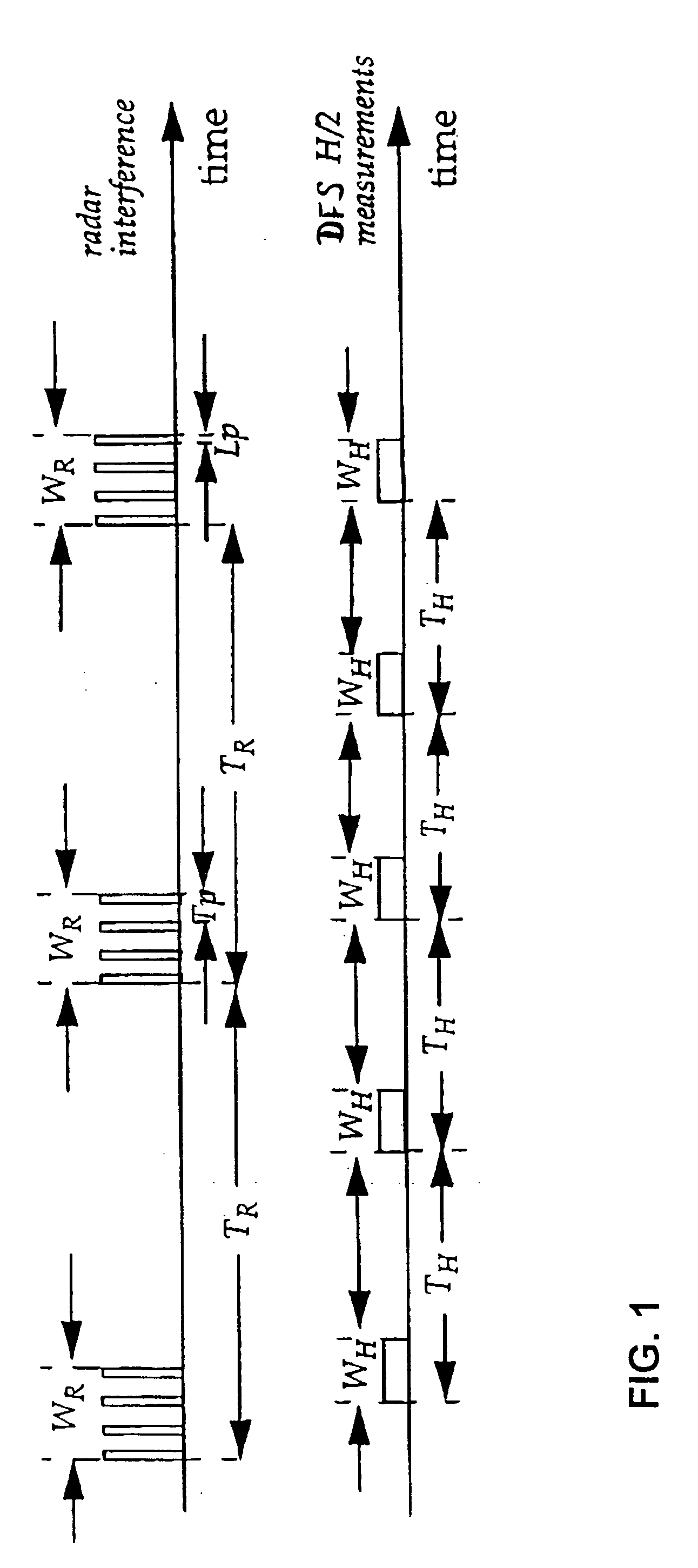Method and device for controlling frequency selection within a wireless communication system
requency selection technology, applied in the field of controlling a wireless communication system, can solve the problems of insufficient detection of radar signals, insufficient reliability of radar signal detection, and insufficient work efficiency of measurement strategies
- Summary
- Abstract
- Description
- Claims
- Application Information
AI Technical Summary
Benefits of technology
Problems solved by technology
Method used
Image
Examples
first embodiment
[0063] a H / 2 or IEEE 802.11a / h system comprising a monitoring device MD is depicted in FIG. 4. The system comprises three MTs and a single AP. The monitoring device MD is included as a software solution within the AP. Such an included monitoring device MD has the disadvantage that it cannot measure when the AP transmits. This means that the monitoring cannot be continuously or quasi-continuously performed during regular transmission of the AP.
[0064] According to the system depicted in FIG. 5, the monitoring device MD is attached as a hardware solution to the AP. The monitoring device MD can be connected to the AP by means of a wired or wireless connection. For example, a radio connection can be provided by means of a separate radio interface (e.g. Bluetooth) or by means of the H / 2 or IEEE 802.11a / h air interface already specified for the MT / AP or the MT / CC communication.
third embodiment
[0065] a H / 2 or IEEE 802.11a / h system comprising a monitoring device MD is depicted in FIG. 6. The system depicted in FIG. 6 comprises four separate cells. A first cell is defined by an AP comprising a monitoring device MD as depicted in FIG. 4. A second and a third cell are defined by APs without monitoring device MD. A fourth cell is defined by a CC.
[0066] The individual quality parameters allocated to specific frequencies are communicated from the AP, to which the monitoring device MD is associated, to the three neighboring cells. Thus, the three neighboring cells can profit from the monitoring and assessing performed within the AP in communication with the monitoring device MD. The individual cells may be connected by means of a radio connection.
fourth embodiment
[0067] In FIG. 7, a H / 2 or IEEE 802.11a / h system according to he invention is illustrated. The system depicted in FIG. 7 comprises a monitoring device MD which is arranged a certain distance away from an AP cell and a CC cell. The monitoring device MD communicates with the AP and the CC by means e.g. of a radio connection or a wired link. Since the monitoring device MD is spaced apart from the AP and the CC, the monitoring device MD can perform continuous or quasi-continuous monitoring during transmission of the AP or the CC. This allows a more reliable detection of radar signals during the normal mode of operation of a H / 2 or IEEE 802.11a / h system.
PUM
 Login to View More
Login to View More Abstract
Description
Claims
Application Information
 Login to View More
Login to View More - R&D
- Intellectual Property
- Life Sciences
- Materials
- Tech Scout
- Unparalleled Data Quality
- Higher Quality Content
- 60% Fewer Hallucinations
Browse by: Latest US Patents, China's latest patents, Technical Efficacy Thesaurus, Application Domain, Technology Topic, Popular Technical Reports.
© 2025 PatSnap. All rights reserved.Legal|Privacy policy|Modern Slavery Act Transparency Statement|Sitemap|About US| Contact US: help@patsnap.com



